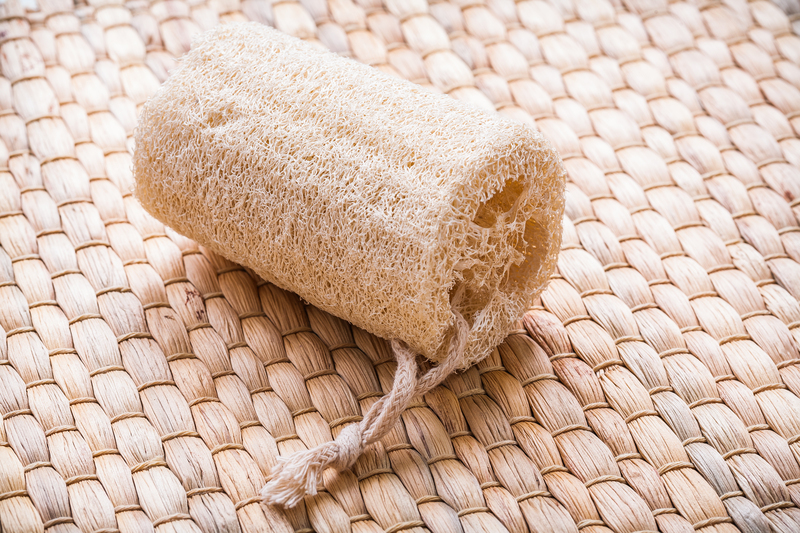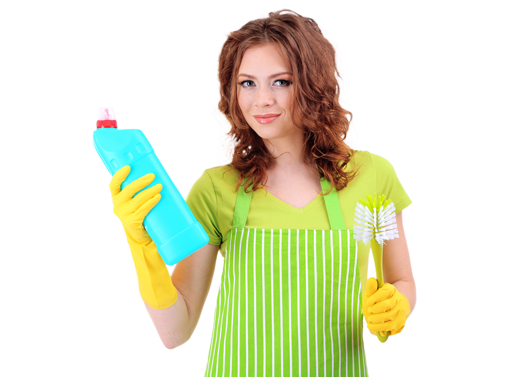Transform Your Stovetop: Professional Tips for Burnt-on Residue
Posted on 26/05/2025
Transform Your Stovetop: Professional Tips for Burnt-on Residue
Is your stovetop plagued by stubborn, burnt-on residue that refuses to budge? You're not alone! Over time, cooking spills and splatters can accumulate, leading to unsightly and difficult-to-clean stovetops. The good news is, with the right professional advice, you can transform your stovetop and restore its original shine. In this comprehensive guide, we'll break down the best methods to clean burnt-on residue, offer preventive care suggestions, and ensure your cooking area remains pristine.
Understanding Burnt-on Residue: Why It Happens
Before diving into cleaning solutions, it's necessary to understand why burnt-on residue forms:
- Spills and Boil-Overs: Unattended pots can spill over, leaving tough stains behind.
- High Heat: Cooking at excessive temperatures causes residues to harden and bond with your stovetop.
- Delayed Cleaning: Waiting too long to clean up messes allows residues to bake onto the surface.
The combination of food, grease, and heat results in tenacious stains that can resist common cleaning methods. Tackling them requires effective, professional-level strategies that protect your appliance and deliver incredible results.

Essential Supplies for Stovetop Transformation
To efficiently remove burnt-on residue from your stovetop, gather the following supplies. Having the right tools makes a significant difference in achieving professional-level cleanliness:
- Non-abrasive sponges or cloths
- Microfiber towels
- Plastic or silicone scrapers
- Baking soda
- White vinegar
- Lemon juice (optional for added cleaning power and scent)
- Commercial stovetop cleaner suitable for your stovetop type (gas, electric, glass, or ceramic)
- Razor blade scraper (for glass tops only -- use with extreme care)
- Gloves to protect your hands
Select products that are approved for use on your specific model to avoid damage, especially if you have a modern glass-ceramic cooktop.
Step-by-Step: Professional Techniques to Remove Burnt-on Residue
1. Allow the Stovetop to Cool Completely
Before starting, always ensure your stovetop is cool to the touch. Cleaning a hot surface not only risks injury but can also damage cleaning tools and products.
2. Remove Loose Debris
Using a soft cloth or paper towel, wipe away any loose crumbs, dust, or food particles from the surface. This initial step prevents further scratching during deeper cleaning.
3. Soften Stubborn Residue with Soak Solutions
One of the most effective ways to tackle tough, burnt-on stains is by softening them first:
- Mix equal parts white vinegar and water in a spray bottle.
- Generously mist the burnt areas and let it sit for 10-15 minutes.
- For extra stubborn spots, lay a damp cloth soaked in the mixture over the stain to keep it moist longer.
This acidic solution helps dissolve hardened food for easier removal.
4. Apply Baking Soda Paste
If vinegar alone isn't enough, make a cleaning paste with baking soda and water:
- Mix 2 parts baking soda with 1 part water to create a spreadable paste.
- Apply a thick layer over the affected areas.
- Let the paste sit for 15-30 minutes -- the longer, the better for tough residue.
The mildly abrasive texture of baking soda helps lift burnt residue without scratching most stovetops.
5. Scrub Gently with Non-abrasive Tools
Using a non-abrasive sponge or a microfiber cloth, gently scrub the surface in circular motions. For glass or ceramic cooktops, do not use steel wool or metal pads as these can cause permanent damage.
- For gas stovetops with removable grates, soak these separately in hot soapy water before scrubbing.
- Use a plastic or silicone scraper at a shallow angle to gently lift larger, stubborn chunks.
6. Use a Razor Blade Scraper -- with Caution
For glass or ceramic stovetops with extremely tenacious burnt-on residue, a razor blade scraper can be a professional's secret weapon:
- Hold the razor at a 45-degree angle.
- Carefully push the blade under the burnt material--never use a stabbing motion.
- Work slowly to avoid scratching or gouging the glass.
Always check your manufacturer's manual to confirm this method is safe for your appliance.
7. Wipe and Rinse
Once the residue is removed, wipe the entire stovetop with a clean, damp microfiber cloth to remove any remaining cleaning solution, food debris, or paste.
8. Polish and Protect
Finish by buffing your stovetop with a soft, dry cloth. For an added shine, consider using a specialized stovetop polish or a simple solution of diluted vinegar for a streak-free finish.
Natural Alternatives for a Chemical-Free Stovetop Transformation
If you prefer more natural methods for removing burnt-on residue, you're in luck! Several everyday products can help restore your stovetop's sparkle:
- Lemon Juice: The citric acid in lemon juice cuts through grease and lifts stains. Squeeze fresh lemon directly onto burnt areas, let sit, then scrub with a damp sponge.
- Baking Soda & Hydrogen Peroxide: Create a paste with these two ingredients for extra cleaning power. Apply, sit, and gently scrub as above.
- Salt Scrub: Sprinkle salt onto stubborn spots, moisten, and use a cloth to rub gently -- ideal for greasy or sticky residues.
Natural remedies are ideal for those with allergies or sensitivity to scented cleaners.
Specialized Cleaning Tips for Gas, Electric, and Glass Stovetops
Gas Stovetop Cleaning Techniques
- Remove burner grates and caps; soak them in hot, soapy water. Scrub with a brush to dislodge debris.
- Use a toothpick or pin to clear clogged gas ports.
- Wipe the main surface with the baking soda paste method for stubborn stains.
Electric Coil Stovetops
- Unplug coils before cleaning!
- Wipe down with a damp cloth after removing loose debris. For stuck-on food, use a baking soda paste and gently scrub.
- Never immerse electric components in water.
Glass and Ceramic Stovetops
- Clean with dedicated glass stovetop cleaners or the baking soda paste method.
- Remove stubborn residue with a razor scraper (as previously outlined).
- Buff with a microfiber cloth to avoid streaks.
Prevent Burnt-on Stovetop Residue: Proactive Maintenance Tips
Prevention is always easier than cure. To maintain a sparkling, residue-free stovetop, follow these professional habits:
- Wipe Down Daily: After each meal, simply wipe the stovetop with a damp cloth to remove fresh spills and splatters.
- Clean Spills Immediately: Address any boil-overs or splatters right away before they have a chance to burn on.
- Use Proper Cookware: Pans with smooth, flat bottoms reduce the chance of spills and ensure even cooking.
- Check Drip Pans and Burner Trays: Frequently clean these areas to prevent residue build-up.
- Apply a Protective Layer: For glass or ceramic stovetops, consider using a tiny amount of olive oil and buffing it in with a cloth to help prevent future sticking and make cleaning easier.
Consistency is key to keeping your stovetop looking brand new. Establish a quick daily routine, and you'll spend far less time scrubbing stubborn stains in the future.
Frequently Asked Questions on Burnt-on Stovetop Residue
1. Are commercial stovetop cleaners better than DIY solutions?
Both have their advantages! Commercial products are designed for tough jobs and are often more effective for severe build-up. However, homemade solutions are eco-friendly, budget-conscious, and usually safe for all surfaces when used correctly.
2. Can burnt-on residue permanently damage my stovetop?
If left untreated for long periods, burnt-on residue can cause discoloration, etching, or even weaken certain stovetop materials. Prompt, careful cleaning preserves the surface and extends the life of your appliance.
3. Is it safe to use a razor blade on my ceramic or glass cooktop?
Yes, but only if your manufacturer allows it. Always proceed with caution and use a new, clean blade at a low angle for best results.
Professional Secrets for a Gleaming Stovetop
- Buff with Microfiber: Microfiber cloths trap dust and leave behind a brilliant shine, preventing streaks on glass and ceramic tops.
- Steam Clean: A handheld steam cleaner can soften any stubborn residue, making removal easier without harsh chemicals.
- Use Stove-Top Protectors: These inexpensive mats catch food spills and are dishwasher safe for easy upkeep.

Conclusion: Enjoy Your Transformed, Spotless Stovetop!
Burnt-on residue doesn't stand a chance with the right approach! From professional techniques to smart prevention, these tips will help you not only transform your stovetop but also maintain its sparkling appearance for years to come. Whether you're a passionate home cook or simply want a tidier kitchen, removing burnt-on stains is always worth the effort.
With diligent care and these expert tricks under your apron, your stovetop will be the pride of your kitchen--ready for every culinary adventure and impressing every guest!
Ready for Your Next Culinary Creation?
Now that your stovetop shines like new, why not try an exciting recipe? A clean cooking surface not only boosts kitchen aesthetics but also improves food safety and meal quality. Keep this guide handy for the next inevitable spill, and you'll always be the master of your kitchen domain.
For more smart kitchen cleaning tips and professional how-tos, bookmark our page and check back for the latest expert advice!





